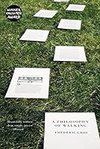
Saved by Evie May and
Psychogeography

Saved by Evie May and
Urban explorers use the dérive to map the emotive force field of the city, and the way architecture and topography combine to create its 'psychogeographical contours'. Robert Macfarlane, a masterful writer-walker of the countryside, offers this summary of the practice: 'Unfold a street map of London, place a glass, rim down, anywhere on the map,
... See more


